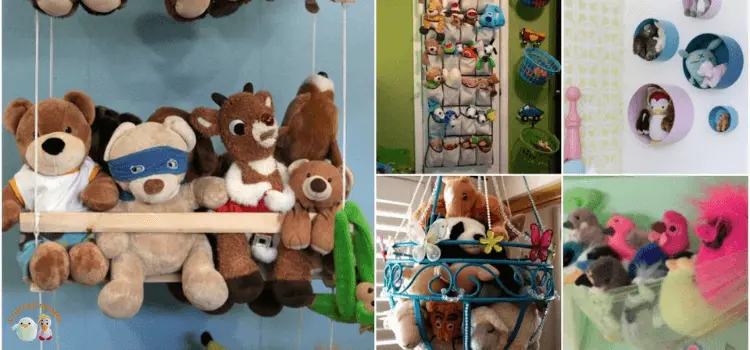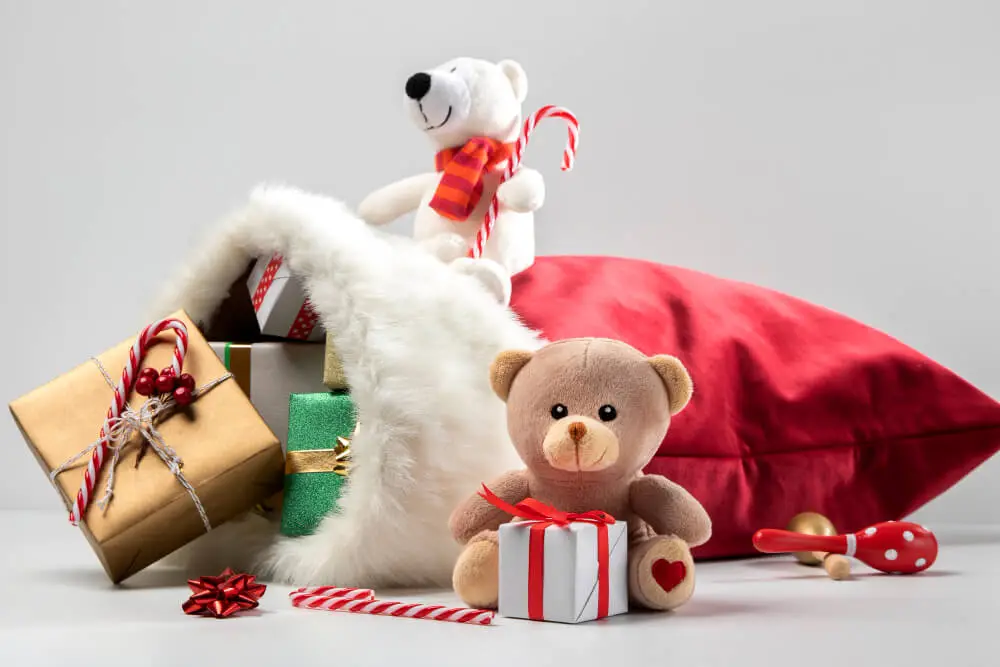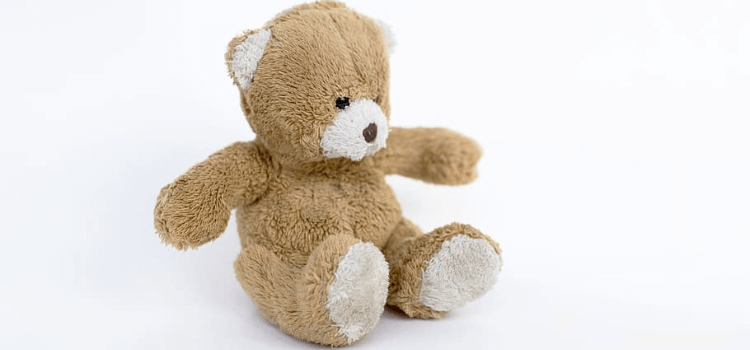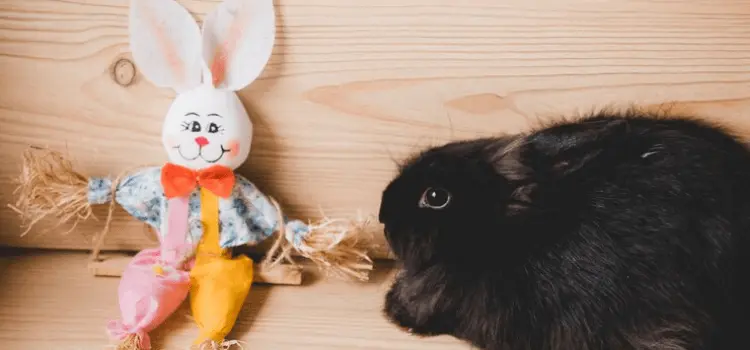Introduction
Welcome to our comprehensive guide on how to store stuffed animals properly for long-term storage. If you’re looking for effective methods to ensure the longevity and preservation of your beloved plush companions, you’ve come to the right place. In this article, we will provide you with expert tips and practical advice on storing stuffed animals in a way that keeps them clean, protected, and ready for future use. Say goodbye to dusty and damaged stuffed animals, and say hello to a well-organized storage solution!
Use transparent plastic boxes or storage bags to store stuffed animals to keep them free of dust and dampness. To avoid damage, store them in a cool, dry location, and don’t stack them.
Gather Supplies
Before we delve into the step-by-step process of storing your stuffed animals, let’s make sure you have all the necessary supplies. Here’s what you’ll need:
- Plastic Totes or Containers: Plastic totes and containers are ideal for storing stuffed animals long-term. They provide a protective barrier against dust, pests, and moisture. Opt for clear containers to easily identify the contents without having to open them.
- Clean White Sheets or Pillowcases: Using clean white sheets or pillowcases is an excellent way to shield your stuffed animals from dust while allowing them to breathe.
- Zipper-Seal Plastic Bags: These bags (Zipper-seal Plastic Bags) are perfect for storing smaller stuffed animals or accessories. They add an extra layer of protection against dust and can help with organization.
- Silica Gel Packs: Silica gel packs are effective at absorbing moisture and preventing mold or mildew growth. Place a few packs in each container to maintain optimal conditions.
- Labels or Markers: Labeling your containers or using markers to write down relevant information will help you locate specific stuffed animals easily.
How To Store Stuffed Animals: Step-by-Step Guide
Step 1: Clean and Prepare
Before placing your stuffed animals in storage, it’s crucial to clean them thoroughly. Follow these steps:
- Check the Care Instructions: Read the care instructions on each stuffed animal to determine the appropriate cleaning method.
- Spot Cleaning: Use a damp cloth or sponge to remove any visible stains or dirt. Gently dab the affected area without saturating the fabric.
- Machine Washable: If the stuffed animal is machine washable, place it in a pillowcase or a mesh laundry bag to protect it during the washing process. Use a gentle cycle and mild detergent. Avoid using bleach or fabric softener.
- Hand Washable: For stuffed animals that are not machine washable, fill a basin with lukewarm water and mild detergent. Dip a clean cloth or sponge into the soapy water and gently wipe the surface of the stuffed animal. Avoid saturating it with water.
- Air Dry: After cleaning, lay the stuffed animals flat or hang them to air dry. Ensure they are completely dry before proceeding to the next step.

Related Topic: How to Wash Stuffed Animals
Step 2: Organize and Sort
Organizing and sorting your stuffed animals will make it easier to locate specific ones later. Follow these steps:
- Categorize: Sort your stuffed animals into categories based on type, size, or theme. This will help you group similar items together for easier access.
- Inspect for Damage: Take this opportunity to inspect each stuffed animal for any signs of damage or wear. If you come across any tears, loose threads, or missing parts, consider repairing them before storage to prevent further damage.

Step 3: Pack and Store
Now that your stuffed animals are clean and organized, it’s time to pack and store them properly. Follow these steps:
- Line the Containers: Place clean white sheets or pillowcases at the bottom of each container to create a soft and dust-free base.
- Group Similar Items: Place stuffed animals from the same category or theme together. This will make it easier to find specific ones later.
- Zipper-Seal Bags: For smaller stuffed animals or accessories, place them in zipper-seal plastic bags before placing them in the container. This provides an extra layer of protection against dust and keeps them organized.
- Silica Gel Packs: Insert silica gel packs into each container to absorb moisture and maintain an optimal environment for long-term storage.
- Label and Stack: Label each container with its contents or use markers to write down relevant information. Stack the containers neatly to maximize space.
Maintenance Tips for Long-Term Storage
To ensure the continued preservation of your stuffed animals during long-term storage, consider the following maintenance tips:
- Check Regularly: Periodically check on your stored stuffed animals to ensure they remain in good condition. Look out for any signs of moisture, pests, or damage.
- Ventilation: Allow for proper ventilation by occasionally opening the containers to circulate fresh air.
- Avoid Extreme Temperature and Humidity: Store your containers in a cool, dry place away from direct sunlight, extreme temperatures, and high humidity.
- Replenish Silica Gel Packs: If the silica gel packs become saturated, replace them with fresh ones to maintain optimal moisture levels.

Conclusion
By following our comprehensive guide on how to properly store stuffed animals for long-term storage, you can ensure that your precious plush companions remain clean, protected, and ready for future use. Remember to clean them thoroughly, organize them systematically, and pack them using the recommended supplies. With regular maintenance and proper storage conditions, your stuffed animals will stay in excellent condition, bringing joy for years to come.
FAQs: Storing Stuffed Animals for Long-Term Storage
How do you store stuffed animals long-term?
To store stuffed animals long-term, follow these steps:
- Clean the stuffed animals thoroughly, following the care instructions.
- Organize them by category or theme.
- Place them in plastic containers or clear totes with clean white sheets as a protective barrier.
- Use zipper-seal plastic bags for smaller stuffed animals or accessories.
- Insert silica gel packs to absorb moisture.
- Label the containers for easy identification.
- Store the containers in a cool, dry place away from extreme temperatures and humidity.
- Check on the stuffed animals periodically for maintenance.
How do you store stuffed animals in a living room?
To store stuffed animals in a living room, consider these options:
- Use decorative baskets or bins to keep the stuffed animals neatly displayed.
- Place them on shelves or in open cubbies for easy access.
- Consider using a storage ottoman that doubles as seating and has hidden compartments.
- Use hanging organizers or nets to hang the stuffed animals on walls or in corners.
- Incorporate them into the room’s decor by arranging them on a dedicated shelf or in a themed display.
How do you store too many plushies?
If you have too many plushies to store, try the following:
- Declutter: Sort through your collection and donate or sell any plushies you no longer need or use.
- Rotate: Keep a smaller selection of plushies on display while storing the rest in containers. Rotate them periodically to keep things fresh.
- Utilize vertical space: Install floating shelves or utilize hanging organizers to maximize storage space.
- Use under-bed storage: Slide plastic containers or vacuum-sealed bags under the bed to save space.
- Consider a dedicated storage cabinet or bookshelf with adjustable shelves to accommodate different sizes.
How do you make stuffed animal storage?
Here are a few ideas for creating stuffed animal storage:
- Hanging mesh organizers: Hang a mesh organizer with multiple compartments on a wall or inside a closet.
- DIY hammock: Attach fabric or netting to the corners of a room to create a hammock-style storage area for plushies.
- Repurpose a ladder: Lean a ladder against the wall and drape stuffed animals over the rungs.
- Display shelves: Install shelves on the wall and arrange stuffed animals as decorative elements.
- Sew storage bags: Create your own fabric storage bags with drawstring closures to keep plushies organized.
Can you store stuffed animals in plastic containers?
Yes, you can store stuffed animals in plastic containers. Plastic containers provide protection against dust, pests, and moisture. Opt for clear containers to easily identify the contents without having to open them. Line the containers with clean white sheets or pillowcases as a soft barrier. Make sure the stuffed animals are clean and dry before placing them in the containers. Use zipper-seal plastic bags for smaller plushies or accessories within the containers. Label the containers for easy identification and store them in a cool, dry place away from extreme temperatures and humidity.







